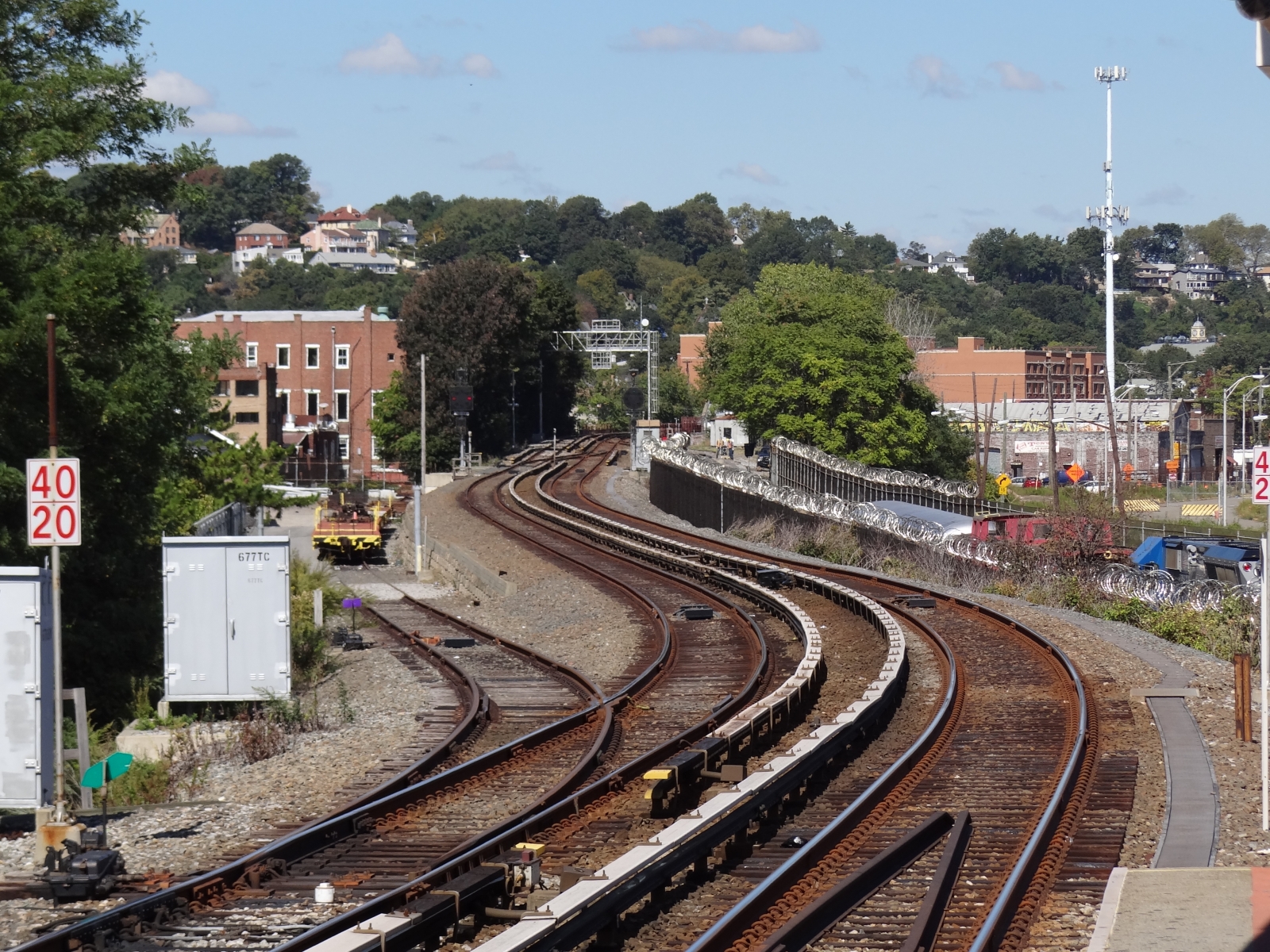
Source: Shannon McGee via Flickr Creative Commons
Forty-two minutes. That’s how long it takes to travel from one end of Staten Island to the other on its one and only train: the Staten Island Railway. While Staten Island’s sole commuter railway line is a mystery to most New Yorkers, it’s a staple for Staten Island residents. I spent the day riding the train across Staten Island to see how it stacks up.
Where Is It? Check Out the Staten Island Railway Map
Looking at a map, you can think of Staten Island as a comma separating New Jersey from the rest of New York City. The St. George Ferry Terminal sits at the northern tip of the island, equidistant from Bayonne and Bay Ridge, and almost three nautical miles south of Manhattan. The Staten Island Railway stretches from this northern point all the way to Tottenville at the southern tip of Staten Island.
History of the Staten Island Railway
Originally called the Staten Island Rapid Transit, the rail line began transporting passengers in 1851. As is the case with many rail lines across the Northeast, the SIRT was financially backed by NYC’s very own hometown railroad tycoon, Cornelius Vanderbilt, who was actually born on the island. Later, the line was leased to the B&O rail company, a name that might sound familiar to Monopoly fans. It’s the same one. In fact, the line became an offshoot of the rail company’s main line, which ran all the way from Baltimore to Ohio.
Although the line was widely used, serving over 12 million people per year by 1944, it was not profitable for most of its existence. When the city started offering reduced-fare buses into the city in the 1940s, ridership dropped dramatically. By 1971, the B&O company threatened to end service. Enter the MTA, which swooped in to buy the line and take over service.
The Staten Island Railway Looks Like the NYC Subway …
The charming Art Deco rail cars that once ran along the SIRT tracks are long gone, replaced in the 1970s with the standard R44 cars that local straphangers will easily recognize. When you ride the Staten Island Railway now, it feels almost identical to getting on one of the older train cars that run on subway lines lines like the N, R, F and G. A ride on the Staten Island Railway requires the same MetroCard, offers the same 24/7 service and has similar countdown clocks and announcements.
… But It’s the Train in Staten Island …
The Staten Island Railway is the only major subway line in New York that doesn’t travel between boroughs. In a curious twist of fate, you might see a train car being hauled over the Verrazzano-Narrows Bridge if the local repair shop in Clifton, Staten Island, can’t handle a necessary fix.
These days, the railway has about 5 million annual riders, which at less than half of 1 percent of NYC subway ridership, doesn’t earn it a place on the MTA’s ridership statistics page. Only two stations on the Staten Island Railway have turnstiles: St. George Ferry and its next closest stop, Tompkinsville. People using the train to get to the ferry have to pay at those stations, while travel between all stations south of Tompkinsville remains free of charge. Of course, the vast majority of SIR trips transport Staten Islanders to and from the ferry at St. George.
… So the Staten Island Railway Is Definitely Different
The Staten Island Railway feels like a suburban commuter rail, because it kind of is. People get to know each other during one of the country’s longest average commutes. I was surprised to see people socializing as I followed a thin crowd onto a local train at the St. George station.
During the off-rush-hour ride I took, the train seemed significantly less crowded than many trains in the city would be at the same time. The crowd was mostly students and construction workers on their way home. There were always seats to spare.
On one platform, boys wearing school uniforms chatted across the platform divide and tossed each other snacks as if they were in adjoining rooms. One woman, seeing the countdown clock for the next train stretching to 15 minutes, walked off the platform only to return exactly 15 minutes later with groceries in tow.
The tracks extending from the New Dorp Station. Source: The West End via Flickr Creative Commons
The SIR tracks run over the ground for the most part, and bisect the neighborhoods they run through. Once the train leaves the ferry station there are constant diversions for the cognizant commuter. At the outset, New York Bay is visible, and the high, angular towers of the Verrazano-Narrows Bridge reach towards the sky. Sections of industrial sprawl give way to spacious neighborhoods of one- and two-story houses. For long stretches, the train settles into a trench and all you see are trees and weeds growing on either side.
Staten Island is the greenest borough, and it shows. When the train doors open, there is so little commotion that birdsong enters the car. On the horizon, century-old treetops hint at ritzy neighborhoods like Annadale or Huguenot passing by. But there is no grand finale. When the train comes to its final stop, only feet from the sea in Tottenville, fencing and trash spoil a potentially impressive view.
—
Hey, why not like StreetEasy on Facebook and follow @streeteasy on Instagram?